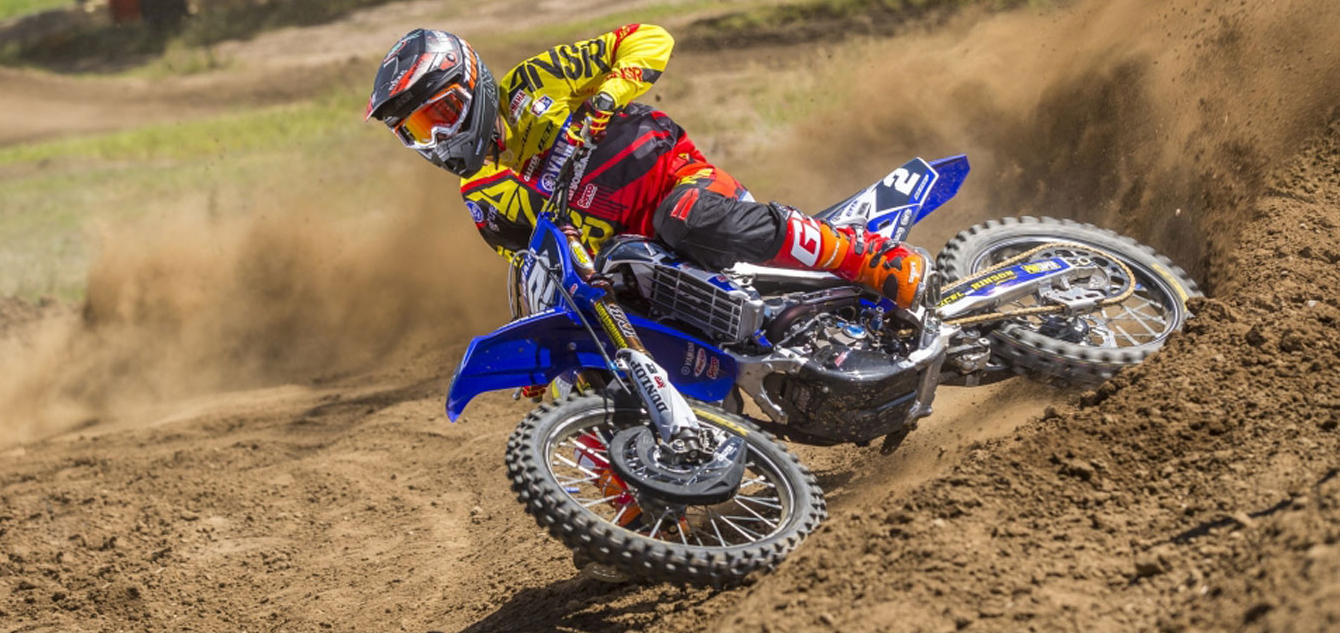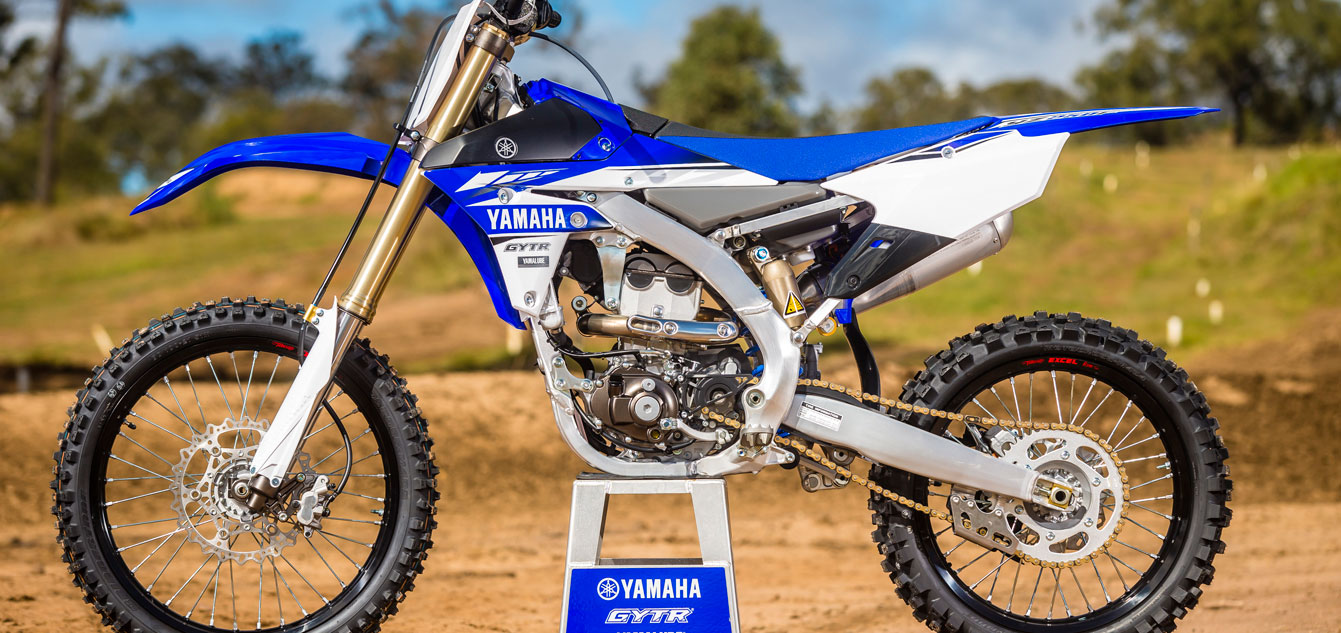
STORY DANNY HAM PHOTOGRAPHY IKAPTURE
Danny Ham heads to the Australian launch of Yamaha’s newest beast – the 2019 Yamaha YZ250F.
Meet Yamaha’s revised and race ready 2019 YZ250F. With the achievements that the previous model has accomplished, Yamaha could be forgiven if a small change here and there was all this new model would be given. This bike has been refined from the ground up, there is not much that has been over looked. From the frame to engine, weight reductions to mobile phone tuning, Yamaha have really pushed a race ready bike straight from the show room floor.
CHASSIS
A new compact bilateral frame has been developed to further refine the handling of the YZ250F. These changes compliment the KYB suspension and changes to the new engine mounts to centralize mass for the best possible balance of bump absorption. Larger upper frame bracing improves rigidity (rigidity increased 25% Vertical, 9% Horizontal, 15% Torsional) and durability, while wider rear frame spars and new engine mounts complete this new design for improved cornering feel and straight-line rigidity.
SUSPENSION
Yamaha retains KYB Speed-Sensitive System (SSS) coil-spring-type fork utilized by the previous generation YZF’s with updated settings with larger pistons, stiffer spring rate (4.6 to 4.7N/mm) and newly designed fork lugs/axle brackets. The shocks Damping characteristics have been matched to the new frame design, a new lighter weight, heavier spring rate (54 to 56N/mm) applied and an increase to 30cc for the shock reservoir. Combined with chassis improvements the bike gives a very positive feel and turns exceptionally well, sometimes to well and finding a tight line in a corner is not an issue. For our day at willow bank we did notice a harsh point mid way through the stroke on the rear that took some work on the clickers to improve. Admittedly at 83kg I’m probably not best suited to the standard settings and could benefit from a visit to a suspension tuner, however it was more then fine to race on and most likely me trying to fine tune a little too much. We did get a much better feel by lowering the ride height a little over our starting point.

POWER PLANT
Yamaha has kept it’s distinctive rearward-slanted cylinder design engine with some fresh upgrades. The cylinder is lighter and angled 1 degree more upright to improve the all important mass-centralization and new intake and exhaust valving delivers outstanding engine characteristics. A new, higher-compression flat-top forged piston has a bridge-box design for additional strength with minimal weight. Fuel is delivered by a lighter 44mm throttle body (changed from Keihin to Mikuni) through a new 12-hole Denso injector. The cam profiles, connecting rod, and optimized crank and counter-balancer work seamlessly for improved power delivery. The engine is strong, even for my generous weight, delivers a very wide power range that extends from the low RPM, very punchy through mid and reaches way up into the high RPM’s. Combined with an extremely smooth feeling engine (very little vibration) this engine far exceeds any previous model and sits it in a level playing field with even the most powerful 250f’s.
The gears and shift drum have been revised to generate a positive, smooth gear change and the new larger-diameter clutch (Plate diameter increased 7mm, friction plates reduced from 9 to8 and steel plate thickness increased 1.2mm to 6mm) improves the feel and reliability under the hardest conditions. And finally following the trend, Yamaha have introduced electric start of the 250f. For anyone that has battled a stubborn 4 stroke at the 25min mark of the most gruelling motocross race, this is a welcomed inclusion to the motocross range.
GIMMICK OR SERIOUS TOOL
For some the Yamaha Power tuner app may not be a new thing (YZ450F owners were able to utilise, previously at an additional cost) but it is a new introduction to the 2019 YZ250F, and now it’s free. The app allows you to create your own engine maps which may need to vary depending on track conditions, weather and temperature. Previously you would need a 3rd party ignition to be able to have this control, usually pre made maps with a couple of options to use on a day. Anything more then that would take another unit or some serious work to make changes on the day. This app makes life easier, or was that harder, or easier?
Ok, so the ability to change your bikes map is easier, getting it right maybe not so much but that doesn’t mean you can’t learn how to. First up the connection is easy, we had 2 numbers stickered to our bike (we each had our own bike for the day). How to connect was not explained to me, however I was able to connect to my device with WiFi in about 30 seconds using the numbers supplied, that simple. Once connected and app is open you just tap the start button on bike for the app to ready and sync. From here you are able to change your fuel and ignition mapping, log a setting (detailed description of track, weather, suspension settings, tyres, gearing etc and comments that correspond to the day), monitor in real time and keep track of maintenance and when due. As you can see this is a very handy tool.
Changing the mapping is easy, you select either fuel or ignition, then it’s as easy as selecting a number (range -4 to +4, zero is default) that corresponds to a position of the RPM range and the Throttle position. The difficult part is learning what does what, and how far you can go. If you have some knowledge already of how this works this should be a bit of fun for you to play around with.
The beauty of this is you shouldn’t be able to wreck it, sort of. Yamaha do have limitations of how far you can push it, but you can still make your bike run like a dogs breakfast. The bike offers 2 positions or options of mapping that can be changed on the fly while riding (button on the bars next to kill switch, once they have been uploaded from app). So once you have the map you like, call that map 1. Then play around with map 2 as much as you like. If it’s a disaster, you can simply go back to map 1 and develop a new map 2.
CDR have used this system all year, there is no third party or what might be seen as a different “Factory” ignition on their race bikes. It is proven that it works, any racer on track has the ability to tune their bikes the same as the factory team, just may take a little time to get your head around it.

THE VERDICT
As stated at the beginning, Yamaha has already proven itself with results. The new bike is only making the brand stronger. The power this bike delivers is strong and wide, honestly I was surprised when I jumped on this beast on a rather heavy track finding myself riding it a little like a 450 (I’m a lazy rider) and still having it pull out the turns with the front wheel in the air. Most impressive for me was the improvement in the higher RPM and how smooth the engine felt. This was an area I felt it lacked in previous models and has made huge gains. The handling was a solid feel, something I like in a race bike. I need to know I’ll have confidence hitting the larger bumps and stay on track. As mentioned there was that harsh spot in the rear shock that I’m sure could be tuned out with some testing. Maybe the stiffer frame may contribute to this feeling. The bike is easy to move around on and feel’s like a race bike in a standard trim. Yamaha have done some serious home work on this model, and I feel they are on yet another winner.
FOR THE FULL TEST CHECK OUT ISSUE 225 OF DIRT ACTION MAGAZINE. TO SUBSCRIBE – CLICK HERE



